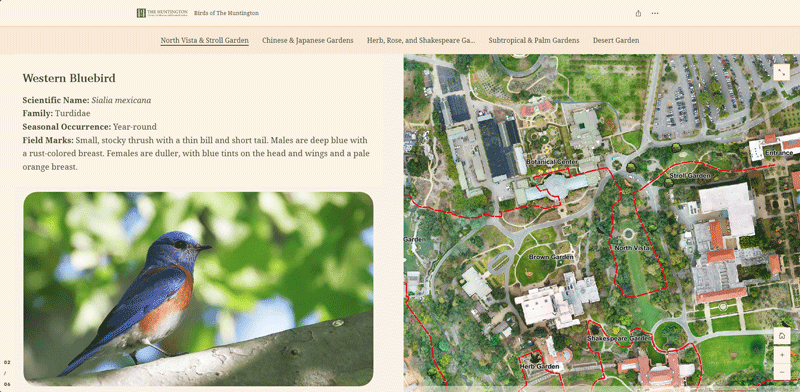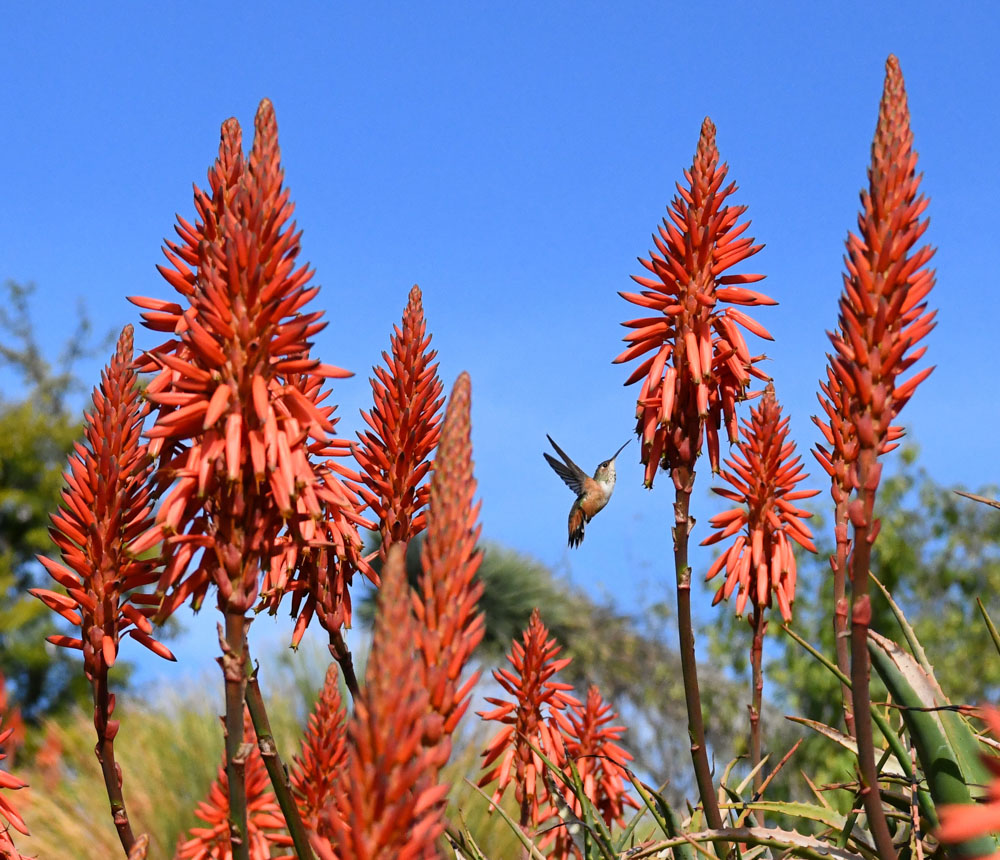
A hummingbird feeds on the bounty of nectar provided by a stand of aloe plants. Photo by Linnea Stephan. | The Huntington Library, Art Museum, and Botanical Gardens.
Henry E. and Arabella Huntington were fond not only of the books, art, and plants that comprise The Huntington’s collections but also the birds that visited or lived on their property. In their day, a reservoir that served as an irrigation source for the expanding gardens also provided a waterfowl refuge, and a large aviary filled with tropical birds stood between what are now the Huntington Art Gallery (formerly Henry and Arabella’s home) and the Rose Garden Tea Room (once Henry’s billiard room and bowling alley). One of Arabella’s cherished pets was an Amazon parrot named Buster, who had the distinction of living indoors with them.
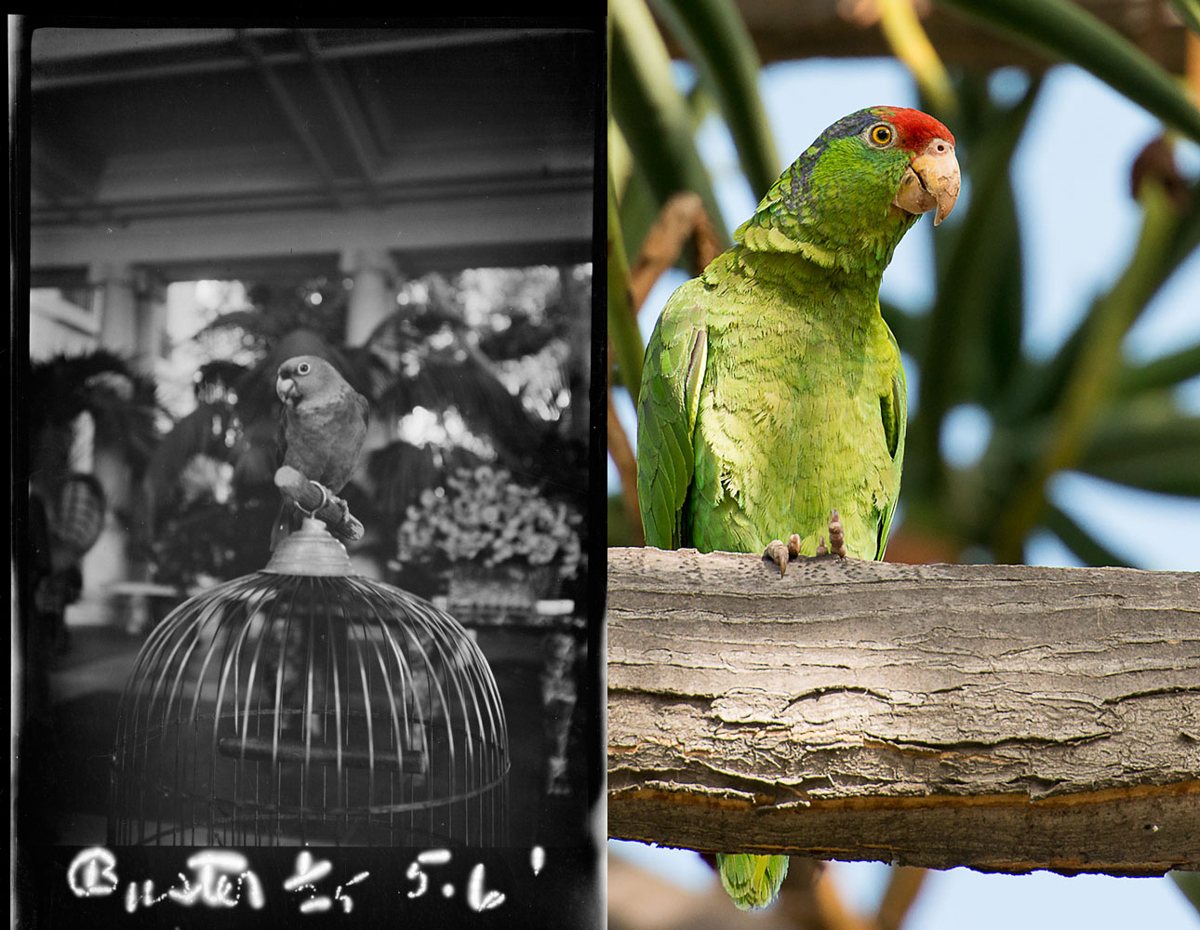
Left: A photo taken around 1916 of Arabella Huntington’s pet Amazon parrot Buster on the loggia of the Huntington mansion. Photo by Collis H. Holladay. Right: Red-crowned Amazon parrots are among the most common parrot species in the Pasadena area today, although they are endangered in their home range in Mexico. Photo by Jeff Silverman. | The Huntington Library, Art Museum, and Botanical Gardens.
Today, the large flocks of wild parrots that have established themselves across the Los Angeles area in recent decades have joined a dazzling array of birds that add beauty and wonder throughout The Huntington’s gardens. Thanks to bird-friendly horticultural practices, the landscape offers avian guests a range of food sources as well as shelter, nesting materials, and assorted water features, including fountains, ponds, streams, and even a lake. In addition to year-round residents, including house wrens and ravens, seasonal visitors such as cedar waxwings and white-crowned sparrows make annual appearances. And where birds flock, so do the people who appreciate them.
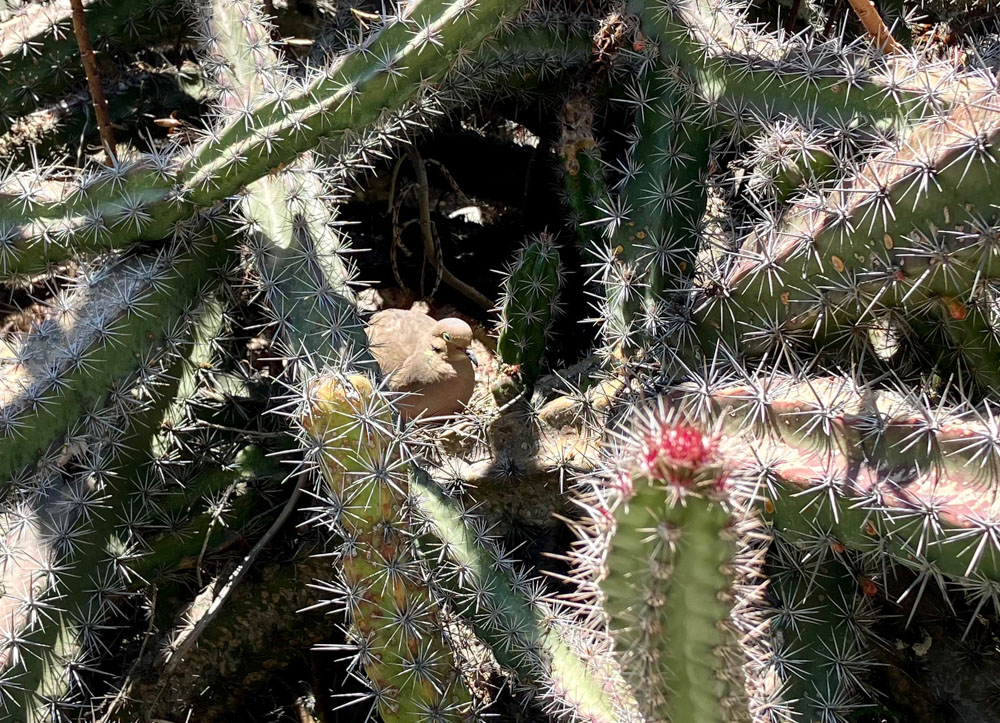
A mourning dove nests in the secure confines of a cactus in the Desert Garden. Photo by Sandy Masuo. | The Huntington Library, Art Museum, and Botanical Gardens.
Groups of birders, as they’re commonly known, can frequently be seen exploring the gardens—equipped with binoculars, cameras, and field guides. Huntington staff are among them, including Geographic Information System (GIS) mapping technician Harrison Hyatt. GIS is a computer system that connects data to a map, integrating location details with descriptive information.
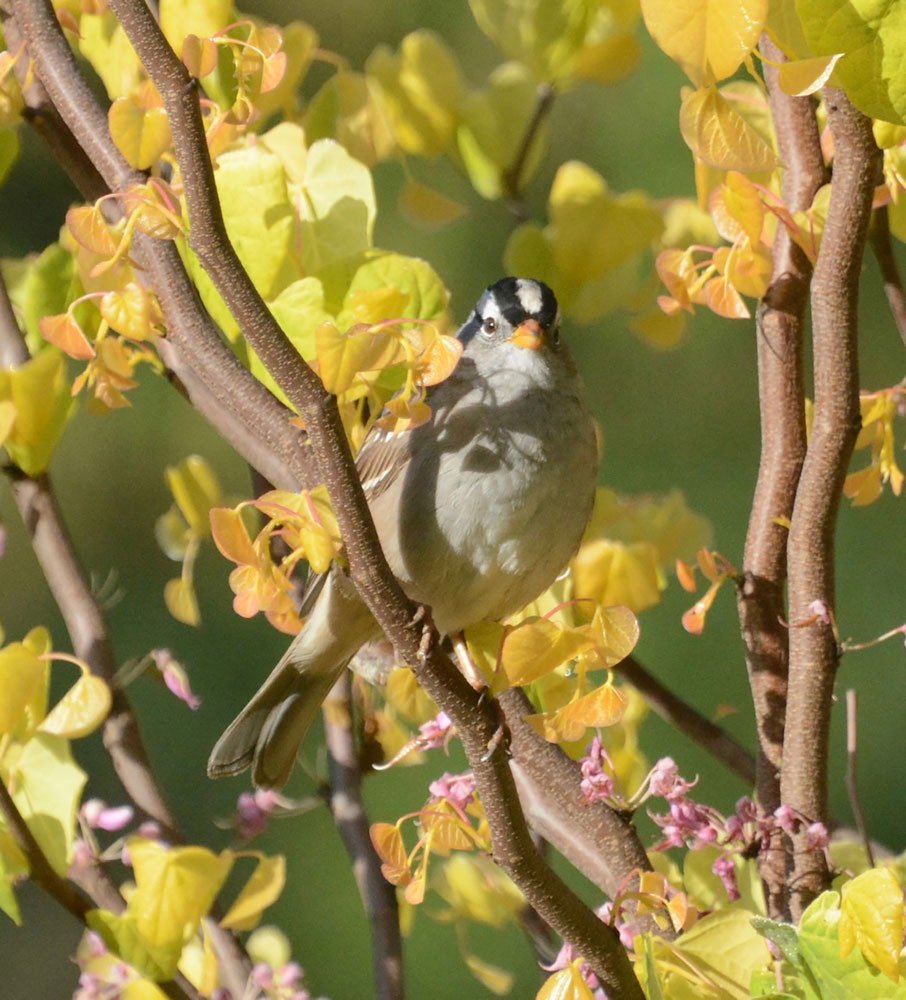
White-crowned sparrows are beloved seasonal visitors in the gardens. Photo by Jim Margitan. | The Huntington Library, Art Museum, and Botanical Gardens.
After completing studies in ecology and evolutionary biology at the University of California, Santa Cruz, Hyatt pursued work on conservation projects focused on seabird populations in California and Hawaiʻi. His first job entailed surveying cormorant and guillemot populations in Morro Bay, California. This led to studying seabird populations in the northwestern Hawaiian Islands. One particularly memorable field project involved traveling by helicopter into Kauai’s stunning and remote Na Pali Mountains to track populations of endangered Newell’s shearwaters and Hawaiian petrels.
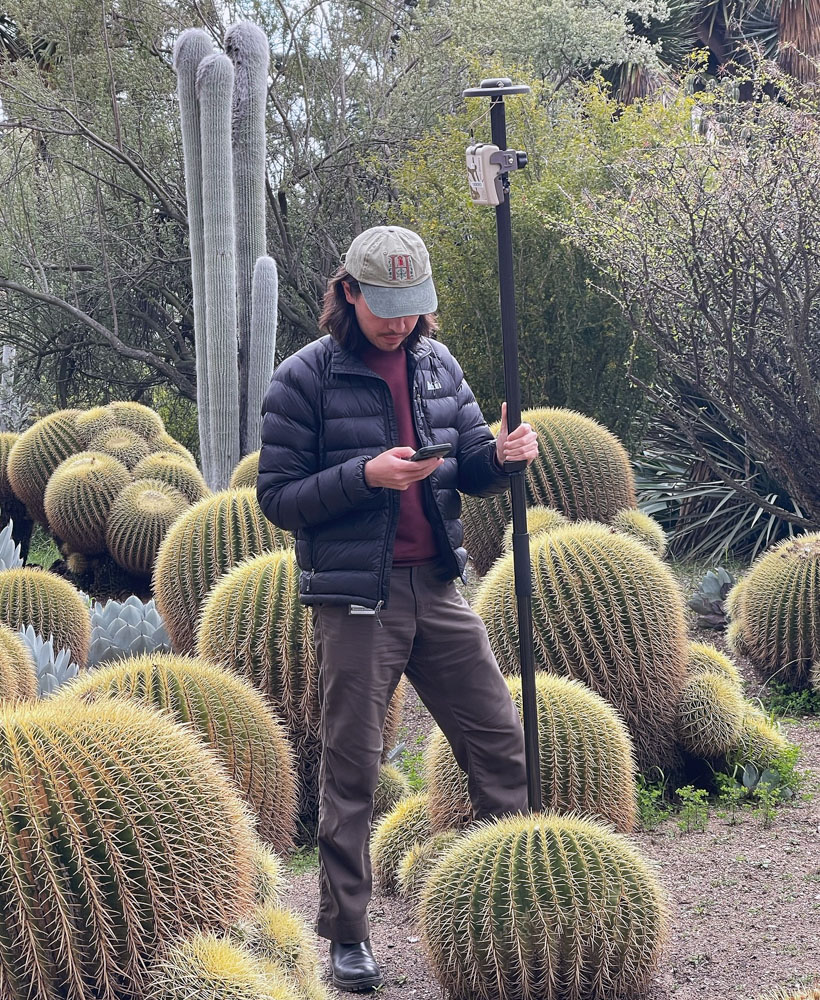
Harrison Hyatt, Geographic Information System (GIS) mapping technician at The Huntington, maps the location of a Golden Barrel Cactus. Photo by Katie Chiu. | The Huntington Library, Art Museum, and Botanical Gardens.
Then Hyatt landed a GIS internship at The Huntington that involved mapping plants in the Desert Garden. While doing that work, he was struck by the diversity of birds attracted to the fruits and flowers there, and this hatched an idea. Using GIS technology, Hyatt created a new resource: an interactive “story map” of the property that highlights bird species commonly found in each themed garden and some of the plants they frequent. Birds of The Huntington is also a multimedia guide that includes capsule descriptions of birds, along with photos and sound files to help with identification.
Explore Birds of The Huntington, an interactive aerial map of the Huntington grounds, and learn about the types of birds you might see in the gardens.
“Given my background in conservation biology and my passion for birds, I felt compelled to make this map,” Hyatt said. “Birding with it can significantly enhance a visitor’s experience by fostering a connection with the surrounding wildlife.”
Observing birds locally can be as easy as taking a walk with your phone, and regional conservation projects are just a screen tap away, Hyatt said. Visitors can contribute to field studies by sharing photos of the birds they see in The Huntington’s gardens and elsewhere through such community science apps as eBird and iNaturalist.
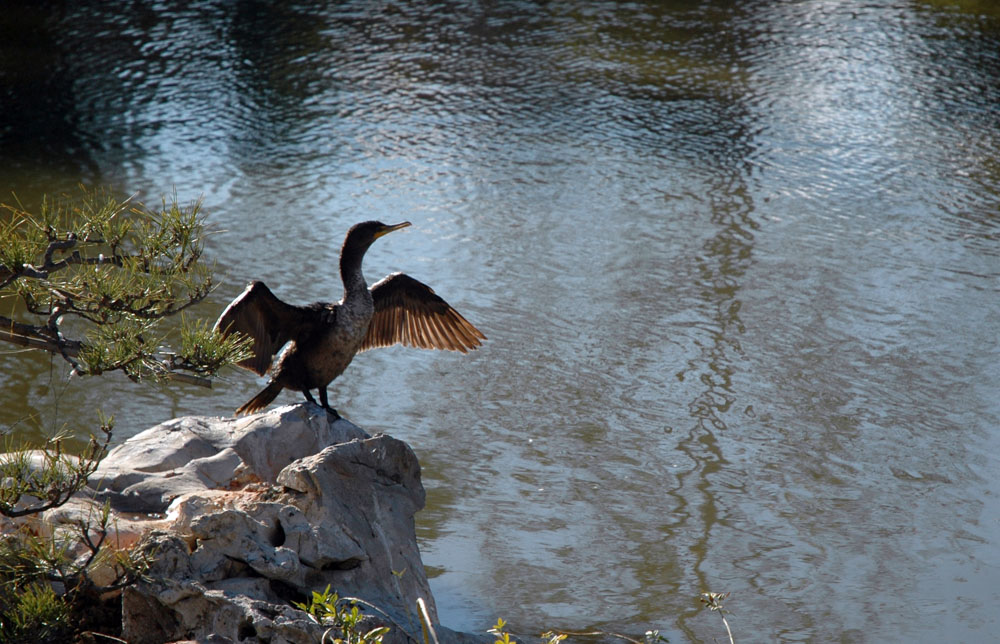
A cormorant suns itself near one of the larger water features in the gardens. Photo by Lisa Blackburn. | The Huntington Library, Art Museum, and Botanical Gardens.
Because most digital photos contain date, time, and location information, they provide researchers with valuable data points. By aggregating many individual observations from across a region, scientists can study wildlife population dynamics.
Those who want to get involved can upload their bird photos as part of the global 2024 City Nature Challenge. This friendly worldwide competition is held annually to record as much biodiversity as possible. Organized by the California Academy of Sciences in San Francisco and the Natural History Museum of Los Angeles County, it prompts people in cities around the globe to see who can make the most observations of nature, who can find the most species, and who can engage the most people. Taking place April 26–29, the four-day global “bioblitz” is an excellent opportunity to channel one’s inner naturalist, observe the surrounding bounty of wildlife, and enjoy connecting with others who share a fascination with the natural world.
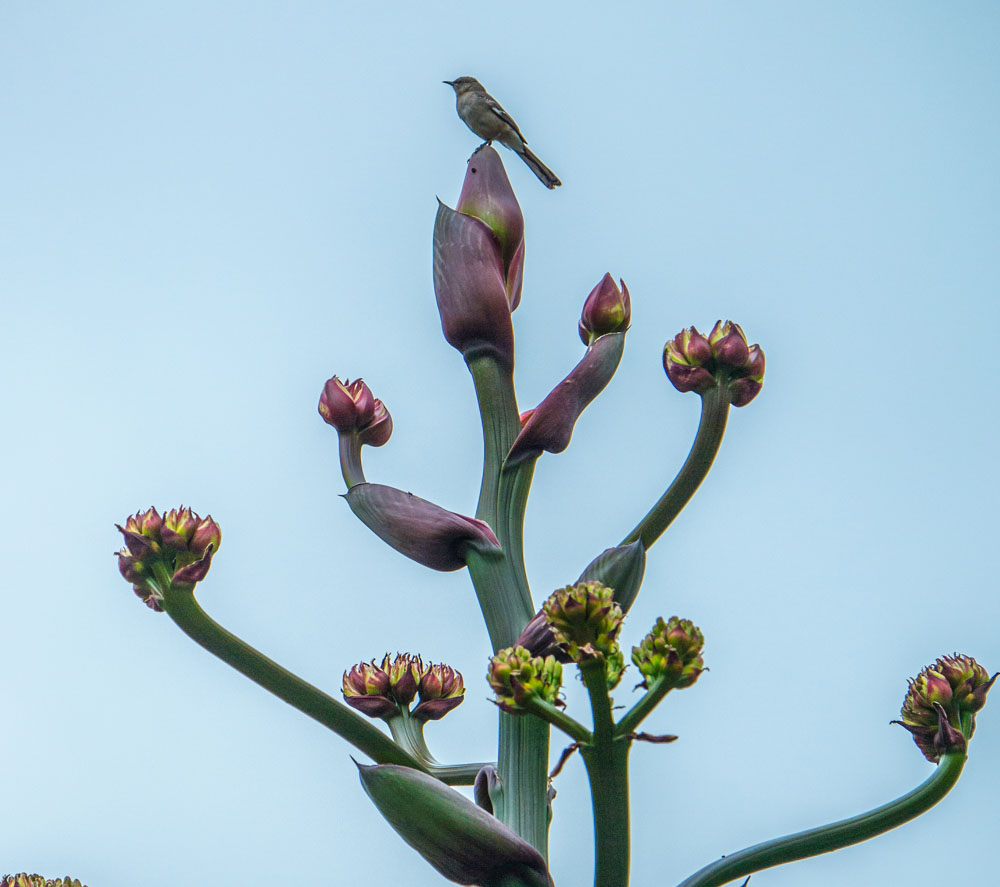
A northern mockingbird surveys its territory from atop an Agave inflorescence. Photo by Lisa Blackburn. | The Huntington Library, Art Museum, and Botanical Gardens.
Parrots are among the birds that visitors are most likely to see at The Huntington. They gather in huge, boisterous flocks at sunset to roost together for the night and then disperse after sunrise to spend the day foraging. They are often a conspicuous presence in the Palm and Subtropical gardens. Parrots are also of year-round interest to researchers at the Moore Laboratory of Zoology at Occidental College. So, beyond the City Nature Challenge bioblitz, you can share parrot photos with the Free-Flying Los Angeles Parrot Project. Photo submissions of birds may also be made to The Huntington’s weekly e-newsletter at website@huntington.org.
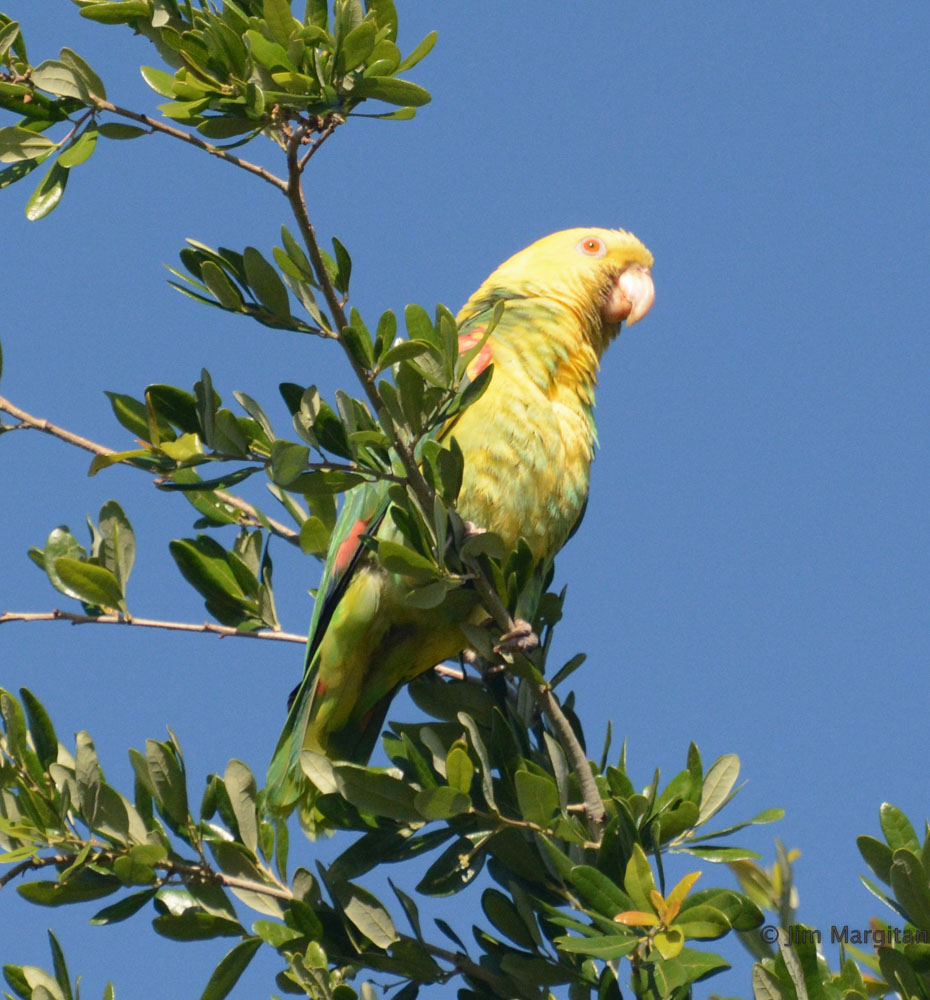
A yellow-headed Amazon parrot perches in the Desert Garden. This species is endangered in its native range (Mexico and Central America). Photo by Jim Margitan. | The Huntington Library, Art Museum, and Botanical Gardens.
“Birding serves as a reminder that life extends beyond our cultivated surroundings and transcends individual concerns,” Hyatt said. “It encourages us to slow down and live in the moment. Birds often go unnoticed—even with their inherent beauty, drama, and silliness. I aspire to change that perspective. Engaging in birding offers an opportunity to appreciate and celebrate the richness of life that surrounds us.”
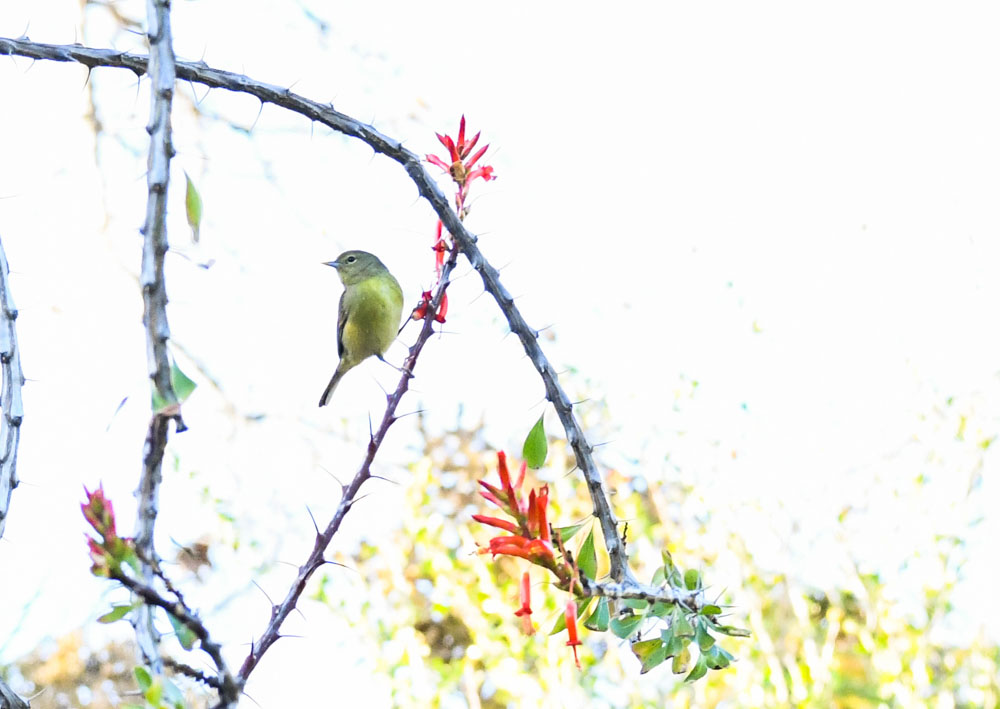
An orange-crowned warbler pauses on an Ocotillo branch. These small songbirds are not flashy in appearance, but their animated behavior is delightful to watch. Photo by Linnea Stephan. | The Huntington Library, Art Museum, and Botanical Gardens.
Sandy Masuo is the botanical content specialist at The Huntington.

